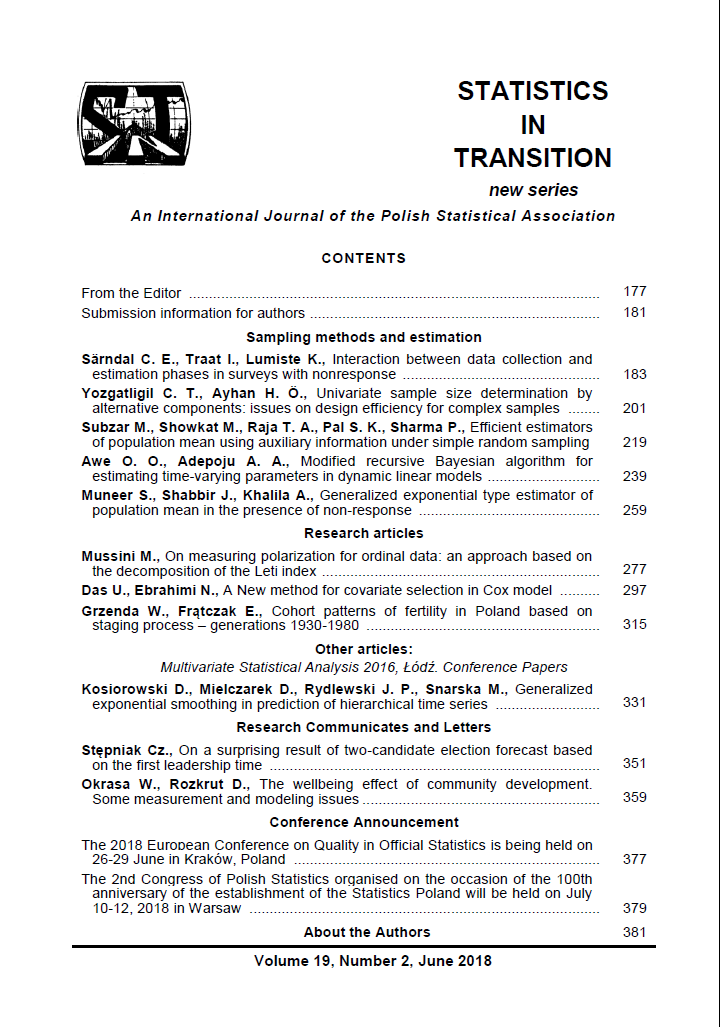ARTICLE
ABSTRACT
This is a simple but provocative note. Consider an election with two candidates and suppose that candidate A was the leader until counting n votes. How to use this information in predicting the final results of the election? According to the common belief the final number of votes for the leader should be a strictly increasing function of n. Assuming the votes are counted in random order we derive the Maximum Likelihood predictor of the final number of votes for the future winner and loser based on the first leadership time. It appears that this time has little effect on the predicting.
KEYWORDS
two-candidate election, winner, leader, leadership time, predicting number of votes for winner, Maximum Likelihood.
REFERENCES
AZZALINI, A., (1996). Statistical Inference based on the Likelihood, Chapman &Hall, London, UK.
BRÉMAUD, P., (1994). An Introduction to Probabilistic Modelling, 2nd ed., Springer Verlag, New York.
FELLER, W., (1968). An Introduction to Probability Theory and its Applications,Vol. 1, 3rd ed., Wiley, New York.
GOULDEN, I. P., SERRANO, L. G., (2003). Maintaining the spirit of the reflection principle when the boundary has arbitrary integer slope, J. Comb. Theory Ser.A, 104, pp. 317–326,
LENGYEL, T., (2011). Direct consequences of the basic Ballot Theorem, Statist.Probab. Lett., 81, pp. 1476–1481.
RENAULT, M., (2007). Four proofs of the Ballot Theorem, Math. Mag., 80, pp.345–352.
SCHERVISH, M. J., (1995). Theory of Statistics, Springer-Verlag, New York.
ST ˛EPNIAK, C., (2015). On distribution of leadership time in counting votes and predicting winners, Statist. Probab. Lett., 106, pp. 109–112.
TAKACS, L., (1997). On the ballot theorem, In: Advances in Combinatorial Meth ods and Applications to Probability and Statistics, Birkhauser, pp. 97–114
